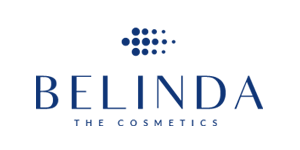CE Certification and CE Marking: A Comprehensive Guide for Businesses
In today’s global marketplace, ensuring compliance with international standards is a critical step for businesses looking to expand their reach. One such essential certification is the CE Certification, which includes the CE Marking, signifying conformity with European Union (EU) regulations. For companies dealing with medical devices, understanding the Medical Devices Regulation (EU) 2017/745 Standards is crucial to achieve compliance and market access. This article explores the fundamentals of CE Certification and CE Marking, focusing on their significance, processes, and benefits.
What Is CE Certification and CE Marking?
The CE Certification represents compliance with the EU’s health, safety, and environmental protection requirements. The CE Marking is a visible declaration that a product meets these stringent standards and can be freely traded within the European Economic Area (EEA). For manufacturers, particularly in the medical sector, adhering to the Medical Devices Regulation (EU) 2017/745 Standards is not just a regulatory obligation but a pathway to gaining consumer trust and expanding market opportunities.
Key Terms Explained
CE Certification: The process of ensuring that a product complies with EU directives and regulations.
CE Marking: A symbol affixed to products indicating compliance with EU standards.
Medical Devices Regulation (EU) 2017/745 Standards: The specific EU regulation governing medical devices, replacing the previous Medical Device Directive (MDD).
Why Is CE Marking Important?
CE Marking is more than a legal requirement—it’s a competitive advantage. By achieving compliance, businesses can:
Access the EU Market: Products with CE Marking can be sold across all EU member states without additional testing or approval.
Enhance Credibility: CE Marking builds consumer confidence by demonstrating adherence to high safety and quality standards.
Mitigate Risks: Compliance minimizes the risk of penalties, recalls, and reputational damage.
Expand Globally: Many non-EU countries recognize CE Marking, simplifying international market entry.
The Certification Process for CE Marking
Achieving CE Certification involves a systematic approach, particularly when addressing Medical Devices Regulation (EU) 2017/745 Standards. Here is a step-by-step guide:
1. Identify Applicable Directives and Standards
Each product category falls under specific EU directives and standards. For medical devices, the Medical Devices Regulation (EU) 2017/745 Standards is the governing regulation, focusing on safety, efficacy, and performance.
2. Conduct a Conformity Assessment
Manufacturers must perform a conformity assessment to demonstrate compliance with relevant standards. This may include risk assessments, clinical evaluations, and performance testing.
3. Prepare Technical Documentation
Comprehensive technical documentation is essential. This includes:
Product descriptions and intended use.
Risk management files.
Design and manufacturing details.
Clinical and performance data.
Declarations of conformity.
4. Engage a Notified Body (If Required)
For certain high-risk products, such as medical devices, manufacturers must collaborate with a Notified Body. These organizations conduct audits and provide third-party assessments to ensure compliance.
5. Affix the CE Marking
Once compliance is confirmed, the CE Marking can be affixed to the product. This step signifies that the product meets all applicable EU requirements.
6. Maintain Ongoing Compliance
CE Certification is not a one-time process. Manufacturers must monitor regulatory changes, conduct periodic reviews, and update documentation to maintain compliance.
Industries Benefiting from CE Certification
CE Certification is relevant across a wide range of industries. Here are a few examples:
Medical Devices: Manufacturers must adhere to Medical Devices Regulation (EU) 2017/745 Standards for products like surgical instruments, diagnostic tools, and implants.
Electronics: Ensuring electromagnetic compatibility and safety.
Construction: Compliance with building material standards.
Toys: Guaranteeing child safety.
Benefits of CE Certification and CE Marking
For businesses seeking to enter or expand within the EU market, CE Certification offers numerous advantages:
Regulatory Compliance: Ensures adherence to EU laws and regulations.
Market Expansion: Opens doors to 27 EU member states and beyond.
Consumer Trust: Demonstrates commitment to safety and quality.
Risk Mitigation: Reduces the likelihood of legal or financial penalties.
Competitive Advantage: Positions your business as a trusted and reliable brand.
Challenges and Solutions in Achieving CE Certification
While CE Certification offers immense benefits, the process can be complex, especially for manufacturers of medical devices under the Medical Devices Regulation (EU) 2017/745 Standards. Common challenges include:
Technical Documentation Requirements: Solution: Engage experts to prepare and review documentation.
Notified Body Delays: Solution: Plan well in advance to avoid bottlenecks.
Keeping Up with Regulatory Changes: Solution: Partner with a certification company specializing in CE Marking.
Conclusion
In an increasingly competitive global market, achieving CE Certification and affixing the CE Marking is a vital step for businesses aiming to build credibility, access new markets, and ensure product safety. For manufacturers in the medical device sector, understanding and complying with Medical Devices Regulation (EU) 2017/745 Standards is essential to navigate regulatory landscapes successfully.
Don’t let compliance challenges hold your business back. Contact us today to start your CE Certification journey and unlock the doors to the European market!
- Get Your Legal Advice
- All Experts Lawyers
- All Experts Lawyers
- Great Discounted Rates
- Fighting for The Average Joe
- Get The Money You Deserve
- All Experts Lawyers
- Justice For All


Point of View
Our Vision
A lawyer or attorney is a person who practices law, as an advocate, attorney, attorney at law, barrister, barrister-at-law, bar-at-law, civil law notary, counsel, counselor, counselor, counselor at law, solicitor, chartered legal executive, or public servant preparing, interpreting and applying law, but not as a paralegal or charter executive secretary. Working as a lawyer involves the practical application of abstract legal theories and knowledge to solve specific individualized problems, or to advance the interests of those who hire lawyers to perform legal services.

